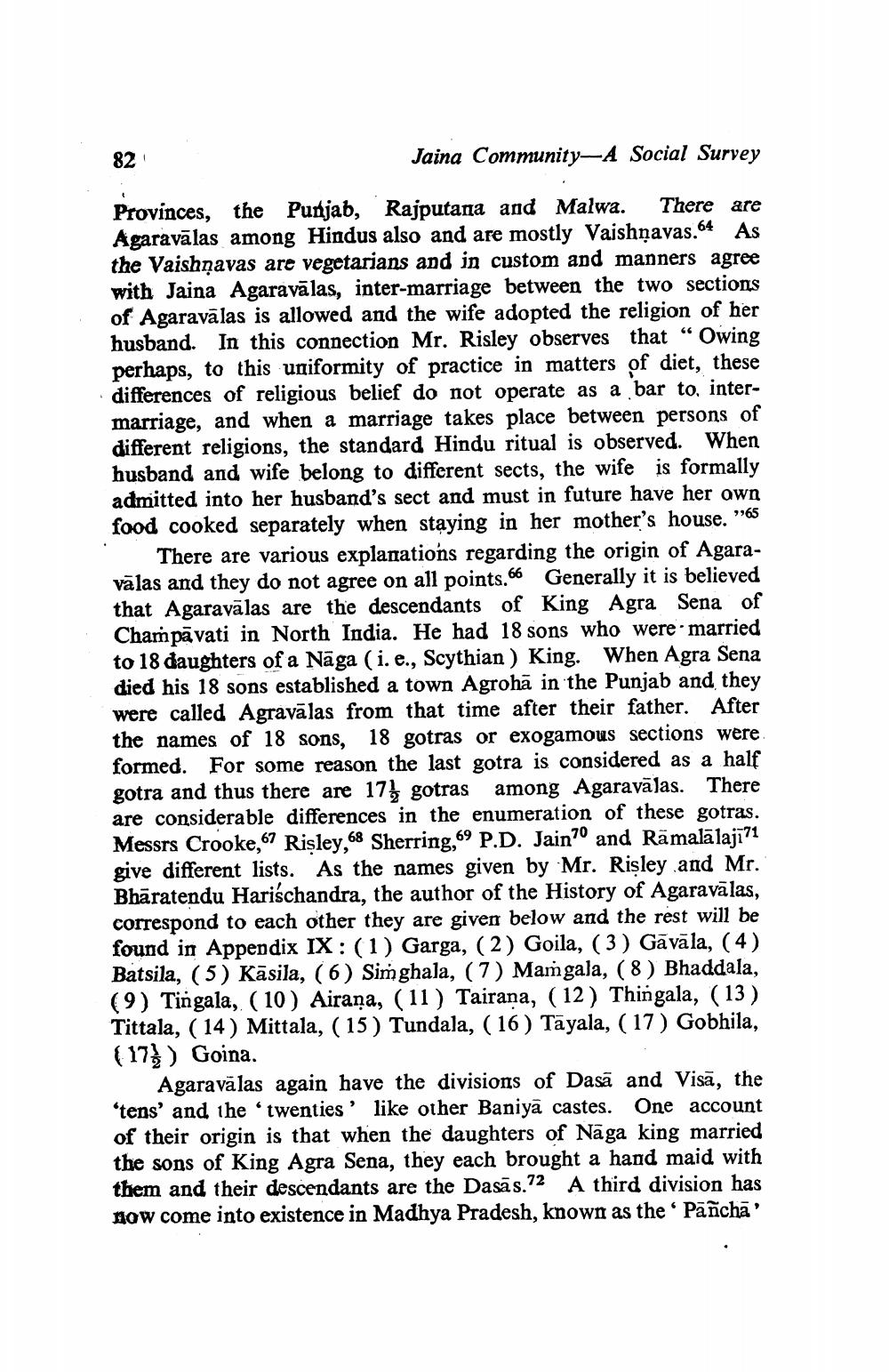________________
82
Jaina Community-A Social Survey
Provinces, the Punjab, Rajputana and Malwa. There are Agaravālas among Hindus also and are mostly Vaishnavas.64 As the Vaishnavas are vegetarians and in custom and manners agree with Jaina Agaravālas, inter-marriage between the two sections of Agaravālas is allowed and the wife adopted the religion of her husband. In this connection Mr. Risley observes that “Owing perhaps, to this uniformity of practice in matters of diet, these differences of religious belief do not operate as a bar to, intermarriage, and when a marriage takes place between persons of different religions, the standard Hindu ritual is observed. When husband and wife belong to different sects, the wife is formally admitted into her husband's sect and must in future have her own food cooked separately when staying in her mother's house."65
There are various explanations regarding the origin of Agaravālas and they do not agree on all points. 66 Generally it is believed that Agaravālas are the descendants of King Agra Sena of Champavati in North India. He had 18 sons who were married to 18 daughters of a Nāga (i. e., Scythian ) King. When Agra Sena died his 18 sons established a town Agrohā in the Punjab and they were called Agravālas from that time after their father. After the names of 18 sons, 18 gotras or exogamous sections were formed. For some reason the last gotra is considered as a half gotra and thus there are 17 gotras among Agaravalas. There are considerable differences in the enumeration of these gotras. Messrs Crooke, 67 Rişley,68 Sherring, 69 P.D. Jain?o and Rāmalālajā?1 give different lists. As the names given by Mr. Risley and Mr. Bhāratendu Harischandra, the author of the History of Agaravālas, correspond to each other they are given below and the rest will be found in Appendix IX: (1) Garga, (2) Goila, (3) Gāvāla, (4) Batsila, (5) Kāsila, (6) Simghala, (7) Mamgala, ( 8 ) Bhaddala, (9) Tingala, ( 10 ) Airana, (11) Tairana, (12) Thingala, (13) Tittala, ( 14) Mittala, (15) Tundala, ( 16 ) Tāyala, ( 17 ) Gobhila, (17}) Goina.
Agaravālas again have the divisions of Dasā and Visā, the 'tens' and the twenties' like other Baniyā castes. One account of their origin is that when the daughters of Nāga king married the sons of King Agra Sena, they each brought a hand maid with them and their descendants are the Dasās.72 A third division has now come into existence in Madhya Pradesh, known as the Pañcha'




